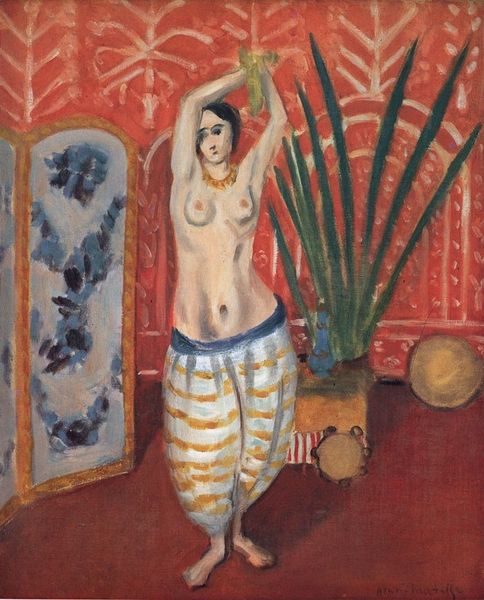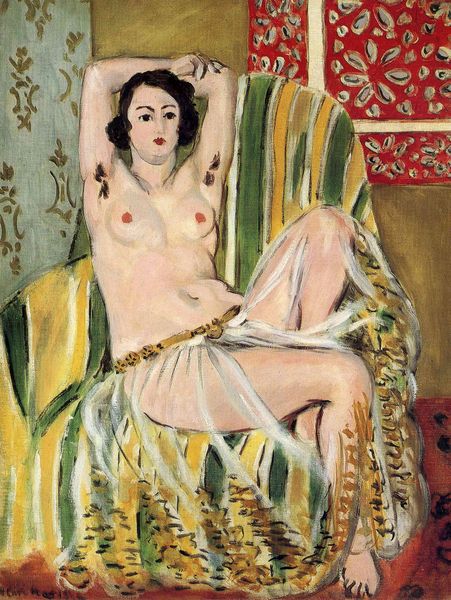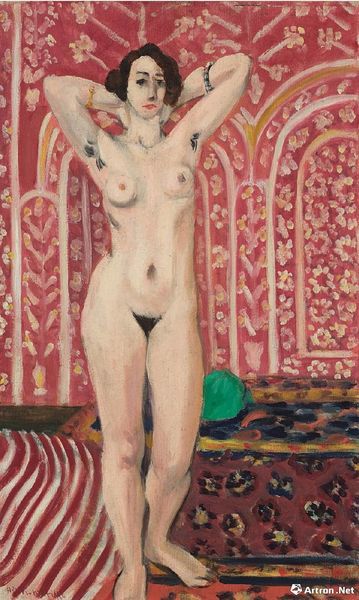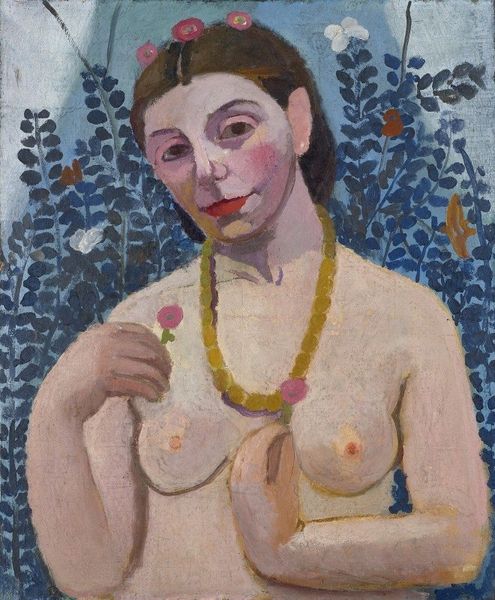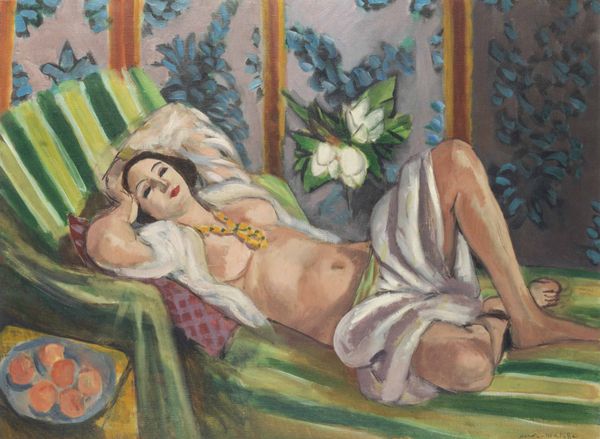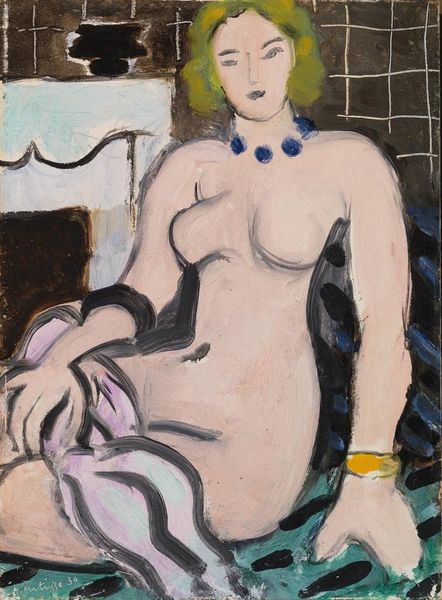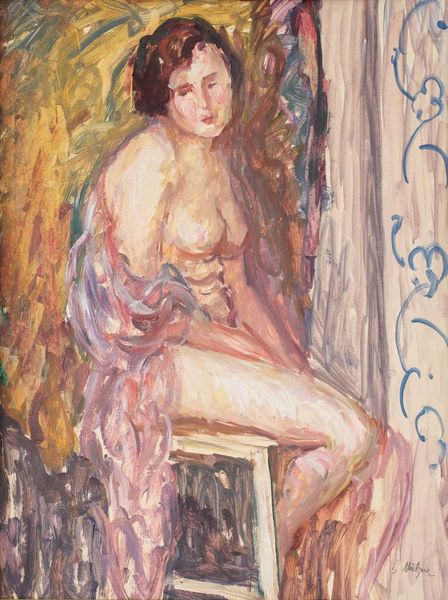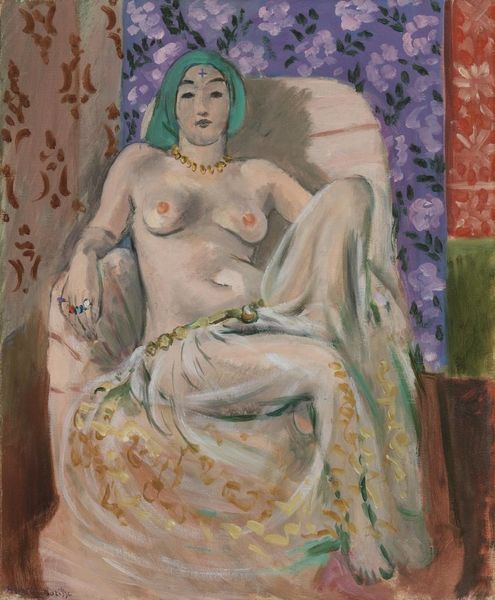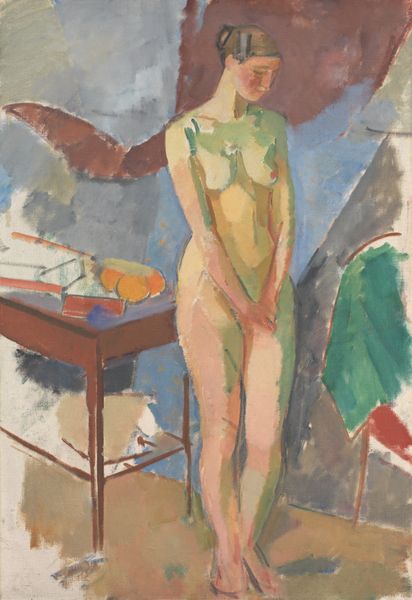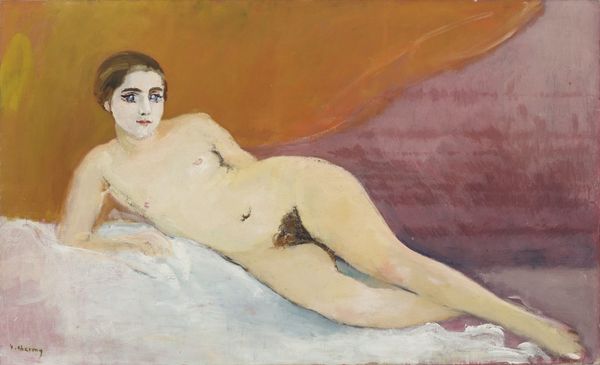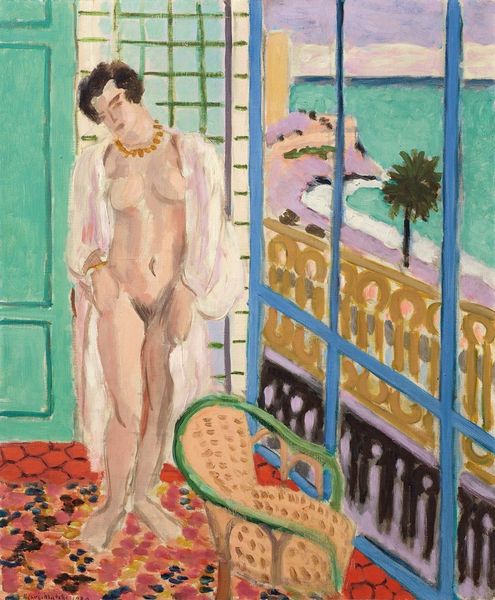
Copyright: Modern Artists: Artvee
Curator: Oh, there’s a certain melancholy hanging in the air here, isn't there? Editor: Absolutely, and that feeling might stem from what we’re seeing: Henri Matisse’s "Odalisque, mains dans le dos," painted in 1923 using oil paints. What we have is a striking example of his fascination with the odalisque figure—a recurring theme throughout his career. Curator: “Striking” is one way to put it! Those flat planes of color…the simplified forms…there’s a deliberateness that borders on confrontational. It’s not about perfect beauty, is it? It's about... essence? Editor: Precisely! Matisse, known for his Fauvist explorations, frequently placed his figures within interiors overflowing with pattern and decoration. The screen behind the model, along with that potted plant and patterned wallpaper, all vie for attention. The odalisque tradition carries a complex legacy tied to orientalism and male gaze. Matisse engages with this tradition but also abstracts it through his style. Curator: Legacy indeed. She almost looks trapped. That posture – “mains dans le dos” – hands clasped behind her back – isn't sensual freedom; it speaks more of confinement. What’s going on behind those eyes, do you think? Editor: Well, it could be seen as a symbol of control and vulnerability—the sitter offering herself to be observed but withholding something too. Matisse was, after all, a man of his time. I wonder how a contemporary artist might reimagine this pose… Curator: Or imagine her breaking free, the painting shattering, colours spilling, that gaze becoming sharp and defiant. That's a thought to spark a new creation! It's quite a provocation isn't it. Even now. Editor: A good painting, as this piece reminds us, should keep us in a conversation, questioning not just what we see, but what we feel and understand.
Comments
No comments
Be the first to comment and join the conversation on the ultimate creative platform.
